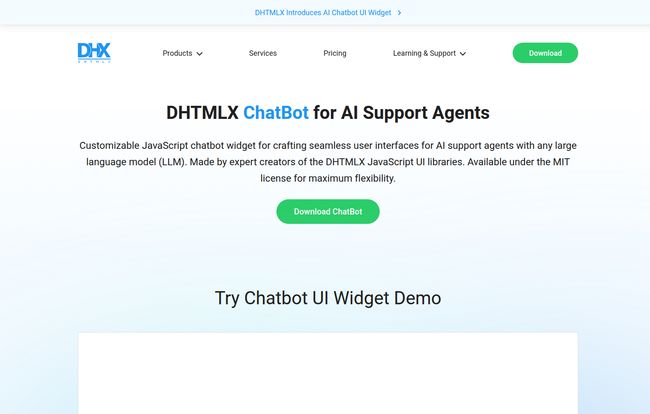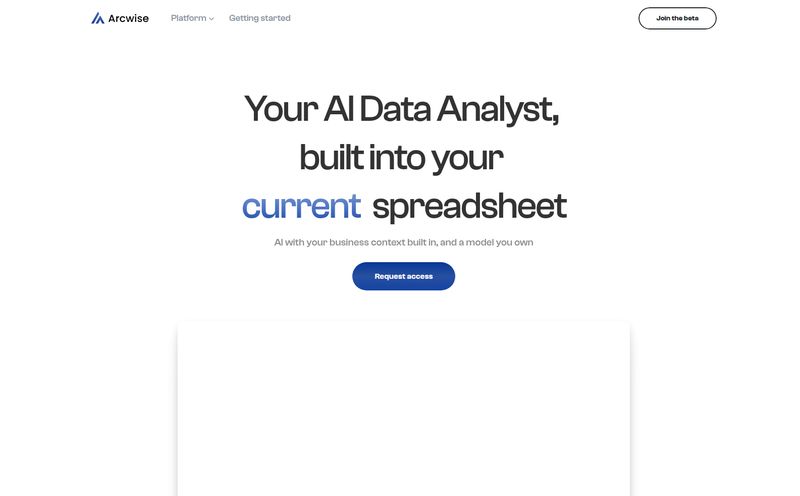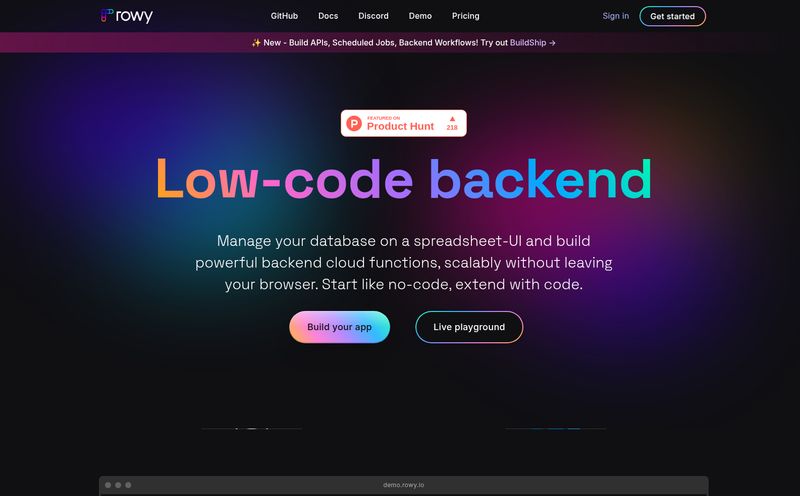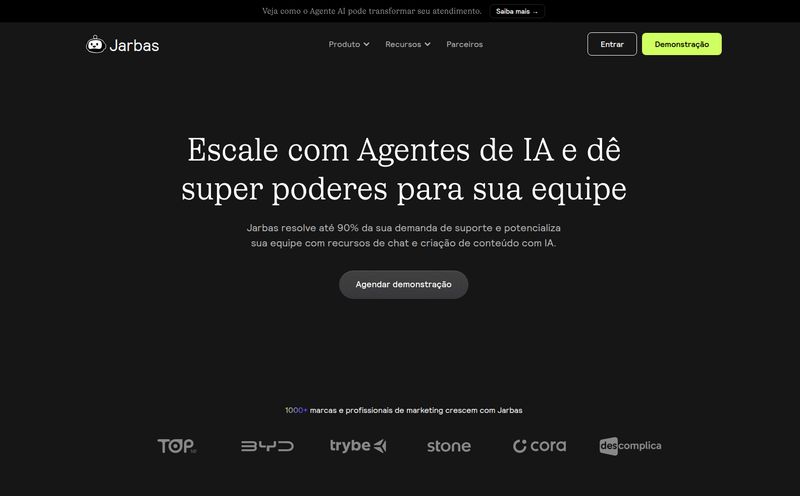As developers and marketers, we've all been there. The boss comes in, buzzing about AI, and says, “We need a chatbot on the site! Make it happen!” So you go looking. And what do you find? A sea of clunky, expensive SaaS platforms that lock you into their ecosystem and look exactly the same on every single website.
It’s the digital equivalent of beige. Functional, sure, but completely devoid of personality.
I’ve spent years trying to find a middle ground—something more flexible than a rigid third-party service, but less work than building an entire chat interface from scratch. It’s a real pain point in the industry. So, when I stumbled upon the DHTMLX ChatBot widget, I was intrigued. A free, MIT-licensed JavaScript widget for the UI, made by a team with a long history in JS components? Okay, you have my attention.
So, What Exactly is DHTMLX ChatBot?
Think of it like this: DHTMLX ChatBot isn't the entire chatbot. It's not the brain. It’s the handsome, customizable face you put on top of the brain. The brain, in this case, is whatever Large Language Model (LLM) you want to use. We're talking ChatGPT, Claude 3, Gemini, or even a self-hosted model if you're feeling adventurous.
This tool is a front-end JavaScript widget. It gives you the chat bubbles, the input field, the typing indicators, and all the visual bits that make a chat feel like a chat. You get a solid, lightweight, and responsive foundation to build on, without having to reinvent the wheel. It's the car chassis; you get to bring your own engine.

Visit DHTMLX ChatBot
Why This Little Widget Actually Gets Me Excited
I see a lot of tools cross my desk. Most are just variations on a theme. But a few things about this one really stand out to me, especially as someone who obsesses over site performance and development freedom.
The MIT License is a HUGE Deal
Let's just pause on this for a moment. MIT Licensed. That means it’s free. As in, actually free. You can use it in your personal hobby project or your company’s multi-million dollar commercial application without paying a dime in licensing fees. In a world of escalating SaaS subscriptions, finding a high-quality component that’s genuinely free is like finding a unicorn. It gives startups, freelancers, and even large companies the ability to create a high-quality AI support agent experience without the hefty price tag. It's a massive win.
Bring Your Own Brain (It's LLM-Agnostic)
This is my favorite part. You are not locked into any single AI provider. The AI landscape is changing so fast, who knows which model will be the best (or most cost-effective) six months from now? With the DHTMLX widget, it doesn’t matter. It’s designed to be a blank slate for you to connect to any LLM backend. You could start with OpenAI’s API and switch to Anthropic’s Claude later with only backend changes. The front-end UI remains the same. That’s called future-proofing, folks, and I am here for it.
It’s Lightweight and Won't Wreck Your Core Web Vitals
I'm a performance nut. I've seen too many sites brought to their knees by bloated, third-party scripts. The DHTMLX team claims their chat widget is lightweight (I saw a 5KB figure mentioned), and that’s music to my ears. A sluggish chat widget can frustrate users and send your bounce rate soaring. A fast, responsive component shows respect for the user's connection and device, and frankly, for Google's Core Web Vitals. It’s a small detail that has a big impact on overall user experience and your SEO traffic.
Digging Into The Features
Okay, so it's free and flexible. But can it do the cool stuff? From my look through their documentation and samples, the answer is a pretty solid yes. You get a good amount of control over the look and feel. They offer different message display modes, so you're not stuck with one boring layout. Plus, it supports the classic "typewriter effect," which, while a small thing, goes a long way in making the AI feel more interactive and less robotic. And for the developers in the audience, the Markdown support is clutch. It means your bot can easily share formatted text, links, and even code snippets without you having to write a bunch of gnarly HTML parsers. A nice touch, really.
Let's Be Real: Who Is This For (And Who Is It NOT For?)
This is where we need to have a real talk. The DHTMLX ChatBot widget is not a magical, no-code, drag-and-drop solution. If you've never written a line of JavaScript, this probably isn't the tool for you. You'll look at the documentation and your eyes will glaze over.
This tool is for developers. Specifically, web developers who are comfortable with JavaScript and aren't afraid to get their hands dirty with an API. You are responsible for two key things:
- Integrating the Widget: You need to add the JS and CSS to your project and configure the widget using its API.
- Building the Backend Bridge: The widget itself doesn't talk to ChatGPT. It talks to your server. You need to build the backend logic that takes a message from the widget, sends it to the LLM's API, gets the response, and then passes it back to the widget to display.
So yeah, there's work involved. This isn't for beginners looking for an out-of-the-box fix. But for a developer who wants full control over their application's experience, performance, and costs? It’s a fantastic starting point. It handles the tedious UI work so you can focus on the more interesting backend and AI integration logic.
Final Thoughts: Is It Worth It?
For the right person, absolutely. The DHTMLX ChatBot hits a sweet spot that has been largely ignored. It empowers developers to build bespoke, performant, and modern AI chat experiences without the licensing fees or platform lock-in that plagues so many other solutions. It respects that you, the developer, want control.
It’s not a one-click install, and it requires some real development skill to bring to life. But the trade-off is immense freedom. The freedom to choose your AI, to customize your UI, and to build something that truly fits your brand, all while keeping your site fast and your budget in check. And in my book, thats a pretty powerful combination.
Frequently Asked Questions
Is DHTMLX ChatBot really free to use?
Yes, it's distributed under the MIT License, which is one of the most permissive open-source licenses. This means you can use it for free in both personal and commercial projects without any licensing fees or royalties.
What LLMs can I connect it to?
You can connect it to virtually any LLM that has an API. This includes popular ones like OpenAI's GPT models, Google's Gemini, and Anthropic's Claude. You just need to build the backend integration to handle the API calls.
Do I need to be a professional developer to use this?
You definitely need some comfort with JavaScript. While you don't need to be a senior architect, a solid understanding of JS, HTML, and how to work with APIs is pretty much required to get it up and running properly. It is not a no-code tool.
How is this different from a service like Intercom or Drift?
Those are all-in-one SaaS (Software as a Service) platforms. They provide the UI, the backend, the analytics, and the LLM connection in a single package, usually for a monthly fee. DHTMLX ChatBot is just one piece of that puzzle: the user interface (UI) component. You provide the rest, giving you far more flexibility but also requiring more development work.
Can I see examples of what it can do?
Yes! The DHTMLX website has a great section with live demos and code samples. It's the best place to get a feel for its capabilities and see how to implement different features. I'd recomend checking them out before you start.
Where can I download the DHTMLX ChatBot?
You can get it directly from the official DHTMLX ChatBot page. They have download links and instructions to get you started via npm or other methods.
References and Sources
- DHTMLX ChatBot Official Product Page
- The MIT License Explained - Open Source Initiative
- DHTMLX ChatBot Live Samples & Demos



